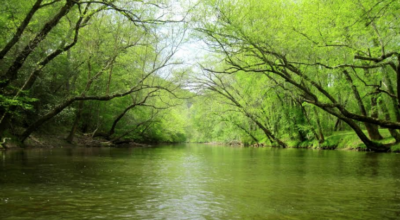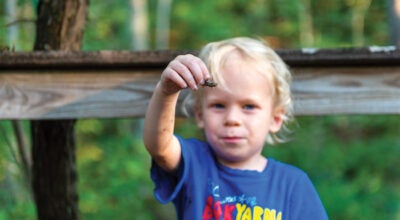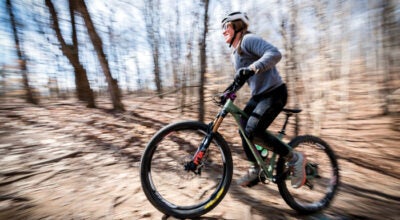Spirit of Rowan: A chance to explore right at our backdoor: Stanback Ecological Preserve offers glimpse of area wildlife for recreational outdoorsmen
Published 12:00 am Sunday, March 24, 2024
SALISBURY — Catawba College is home to a lot of cool things, but one aspect — the Stanback Ecological Preserve — stands out for its commitment to capturing local flora and fauna in an accessible way for outdoor enthusiasts and just the recreational walkers to take in what the ecosystem has to offer.
Ecological Preserve Keeper Joshua Cool maintains the 189-acre preserve in addition to providing tours to interested groups.
“Having that much wetland habitat inside city limits is pretty cool,” Cool said. “You can go out there and see obligate wetland creatures not even five minutes from Innes Street.”
Cool takes school groups and other groups to give them more information of what they are looking at.
“I normally point out plants, and if we do see some animals,” Cool said. “I tend to point out whatever is blooming at the time. Some of the asters bloom later in the year. It varies seasonally. Whatever plant is visually striking at the time. I point it out and tell them about it.”
As for animals, Cool said that it is easier to see animals in a smaller group than in a large group walking. While the preserve boasts numerous species, not all are native.
“As soon as we come down, one of the first things I tell people about is the emerald ash borer,” Cool said.
Emerald ash borers are a visually striking beetle but are also an invasive species that Cool and other environmentalists worry will wreak havoc on East Coast ash tree populations.
Some of the more striking species to be seen in the preserve are avian.
“We have blue herons; big striking guys,” Cool said. “We have yellow-crowned night herons (and) green herons. Flycatchers are cool — little tiny birds darting over the water. You cannot see what they are going after, so it’s just an erratic flight swooping over water.”
Other animals like to keep their feet on the ground like beavers, raccoons, coyotes, deer and otters.
For Cool, the preserve offsets a shortcoming many young people have in today’s digital world.
“Having seen the nature deficit that most kids seem to be experiencing, I think it is hugely important to get them invested in nature really early,” Cool said. “It’s a great place for it.”
The preserve is hardly just a place for young people though and Cool’s tour groups reflect that. His visitors have run the age gamut. He acknowledged that he’s just happy to see people are interested in nature and the preserve.
The space also represents modern approaches to habitat restoration projects.
“For a long time, the idea of conservation was, well, you put up a wall around it,” Cool said. “You can’t mess with it, and you are done. Thankfully, people are coming around to the idea that conservation needs more of a regenerative focus. We need to undo problems that were created for years and years.”
In many cases, assisting plant life viability goes up the ladder in terms of aiding the success of wildlife conservation.
Cool pointed to one species, the golden rod, as an example.
“Golden rod is a hugely important plant for a lot of butterflies and birds,” he said. “There has been a lot of long term planning for how we can make it a better place for wildlife.”
Accessing the preserve is just a matter of getting out there. It is located adjacent to Catawba’s campus.
The preserve is also an extension of Catawba’s Center for the Environment.
“(We have) a lot of students in the environmental programs,” Cool said. “The preserve is a great value-add for environmental students at Catawba that can conduct field experiments that you might not get to do at another school.
“I assist them with things they need and help students pick our places that they might have the best luck observing.”
For visitors, the preserve does have some restrictions.
“What we say is like general park rules — dusk to dawn,” Cool said.
Cool explained that much of the wildlife forages for food at night, so human presence in the evenings is not ideal.
“At the end of the day, I tell people, it’s not a park, it’s a preserve,” Cool said. “There is a difference.”
The caretaker said that passive recreation is encouraged like walking and bird watching, but no bikes, fishing or hunting are allowed. Dog walking is permitted on a leash for more reasons than one, but one, in particular, highlights the delicate balance of life the preserve maintains.
The preserve features box turtles that have meticulous egg-laying tendencies.
“If a female mates, they can retain that for years,” Cool said. “They pick a good season and time to lay the eggs. With turtle eggs, the sex of the eggs is determined by the temperature of the ground. That is manipulated by the laying turtle. She will dig a nest at a certain depth.”
If someone is taking their dogs out to the preserve, Cool indicated that it really doesn’t matter how well-behaved the dog is; if it smells something and scratches, the careful work of the turtle that might have been years in the making is undone.
The preserve is a valuable asset to the community and one that should be treated as such. Continued enjoyment of what it has to offer relies on compliance with the protections enacted by its caretakers. Don’t miss an opportunity to get close to nature by visiting the preserve, but remember that its balance relies on dedicated observance of those guidelines and rules. With hope, the preserve will be around for years to come.




